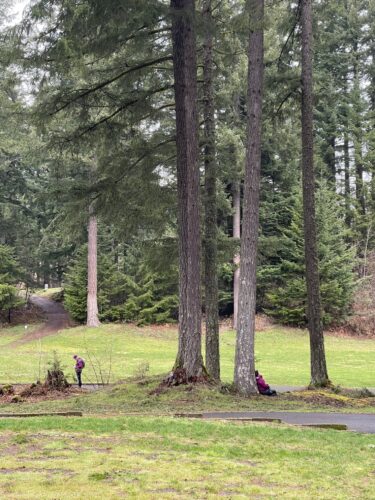All the hustle, bustle, and busyness during this time of year often feels overwhelming. As schools wind down before the holiday season, the activities ramp up—spirit weeks, dress-up days, festivals, parties galore…all the things! Your organization might be wrapping up programming for the year, preparing to go full steam ahead in January.
Which is why right now is the perfect time to refuel and recharge yourself (and your learners) by taking a Gratitude Walk.
A Gratitude Walk helps us pause, reflect, and give thanks for every person and every living thing in our natural world.
While Indigenous Nations across North America differ in many ways, one commonality they share is that other beings, not just humans, are considered our relatives in the web of life. This is not only honoring and showing respect to one another but also to the plants, animals, insects, water, and other sources of life on our planet. We are all interconnected and rely on each other.
A Gratitude Walk helps remind us of this.
Give Thanks
Research has shown that expressing gratitude and spending time in nature benefits your mental and physical health. According to UCLA Health, “Taking a moment to be thankful causes physiological changes in your body that initiate the parasympathetic nervous system—the part of your nervous system that helps you rest and digest. Gratitude and the response it causes help bring down your blood pressure, heart rate and breathing to help with overall relaxation.”
Being in nature has similar effects—reducing anxiety and stress levels and boosting creativity and the ability to problem-solve.
Pause & Reflect
A Gratitude Walk is something that learners of every age can do.
Whether you can take learners outside for 5 minutes or 50 minutes, grab a sweater or warm coat and head into nature for a walk.
 Begin your walk by modeling a slow pace and quiet mind, allowing for time to simply notice. Encourage everyone to use their senses, which might entail closing their eyes momentarily to fully be immersed in listening.
Begin your walk by modeling a slow pace and quiet mind, allowing for time to simply notice. Encourage everyone to use their senses, which might entail closing their eyes momentarily to fully be immersed in listening.
- Notice the sounds you hear. Are leaves rustling in the wind? Do you hear birds chirping? How do the sounds make you feel? Can we thank the wind and birds for their gifts of nature noises?
- Take a deep breath in and notice the smells. Can you smell pine needles? What about crisp, fresh air? Do you smell freshly cut grass? Let us thank the trees and plants for providing sweet scents and clean air for us to breathe.
- What is the weather like? Is it chilly? Is the sun shining warmly on your face, or is there a cool mist falling from the fog? Let us thank the sun for feeding the plants and the rain for bringing us water. Let us be grateful to the four seasons and variety of weather each season provides.
- Can you spot any animals or insects? Let us be grateful to the animals and insects that help pollinate the plants we eat or who bring us delight when we spot them.
Allow an opportunity for your learners to walk quietly and think about what they are grateful for and, if you have time, invite everyone to share or express that gratitude aloud.
Nature is teeming with life!
Invite your learners to point out as many living beings as they can. Together, talk about the role each plays in the web of life. Encourage learners to express their gratitude for each thing they notice, including one another.
Find a plant or tree that each person can get close to and explain how plants give us fresh oxygen, and in return, they breathe in the carbon dioxide that we are breathing out. Demonstrate that we can share our gifts with each other in a circle of reciprocity – take a moment to lean toward the plant and deeply breathe in the fresh air, then, in return, breathe out onto the plant. We can express our gratitude when we share our gifts with each other. This also allows for an opportunity to take a few deep, calming breaths in nature.
Even if you can’t go for a long walk, just spending a brief time sitting outdoors to reflect and give thanks to each other and our natural world can make a world of difference during this season, which can be stressful.
PLT Activities to Pair with a Gratitude Walk
Early Childhood
- Any and all activities from Trees & Me: Activities for Exploring Nature with Young Children
Elementary & Middle School
- Get Outside! / ¡Sal al Aire Libre! from Explore Your Environment: K-8 Activity Guide / Explora tu Ambiente: Guía de Actividades K-8
- Poet-Tree / Árbol Poeta from Explore Your Environment: K-8 Activity Guide / Explora tu Ambiente: Guía de Actividades K-8
- Web of Life / Telaraña de la Vida from Explore Your Environment: K-8 Activity Guide / Explora tu Ambiente: Guía de Actividades K-8
- Connecting for Health and Planet activity collection
High School
- Words to Live By from Focus on Forests
- Personal Places from Places We Live
Learn More
You can find additional details about Traditional Knowledge and Gratitude Walks in Appendix F of PLT’s Trees & Me: Activities for Exploring Nature with Young Children.
Thank you to Molly Gillespie, Alaska PLT State Coordinator, for contributing to this article!


